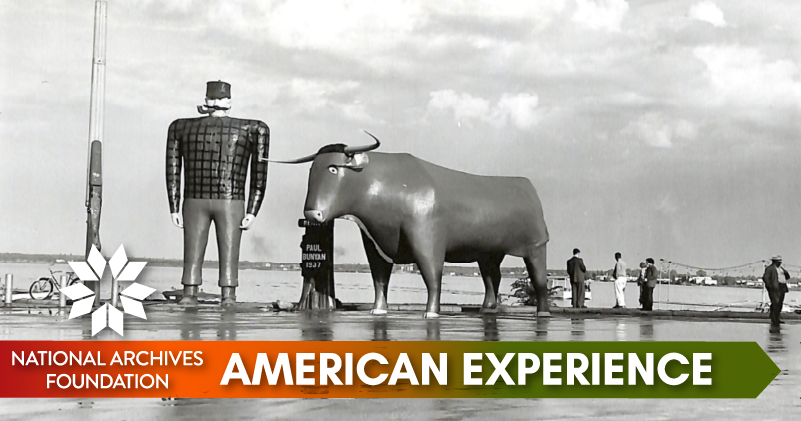We Salute You

Vietnam War Veterans Day was first observed nine years ago as a one-time occasion when President Barack Obama issued a proclamation. The day became an annual observance when President Donald Trump signed the Vietnam War Veterans Recognition Act of 2017.
The Paris Peace Accord officially ended the Vietnam War on January 27, 1973, and on March 29 that same year, U.S. combat and combat support units withdrew from Vietnam. Of course, that was not the end of the story. In March 1975, North Vietnam invaded South Vietnam and Saigon fell to North Vietnam by the end of April.

Remembering Vietnam
an online exhibit
It wasn’t until the National Archives mounted the powerful and highly praised retrospective exhibit in 2017, Remembering Vietnam, that I fully understood the historic magnitude, divisiveness, and long legacy of this conflict. Organized around 12 key episodes in the Vietnam War, it included iconic and rarely-seen material from the National Archives’ holdings that cast light on the events and repercussions of the war through images, videos, timelines, and objects, as well as the parallel cultural and policy impacts at home. One of the Foundation’s contributions to help raise awareness of this effort was a series of powerful first-person interviews with Vietnam War veterans.

Remembering Vietnam
Video interviews with 22 veterans
This week’s email continues that effort to shine a light on the many stories from Vietnam found in the Archives. Please join us on Monday, March 29, as we honor those who served in Vietnam.

Patrick Madden
Executive Director
National Archives Foundation
Women Marines in Vietnam

Women who Served
in the NARA Prologue blog
Women have served in the U.S. Marine Corps at several different times and during different conflicts, but it was not until 1948, well after World War II had ended, that women were permanently welcomed into the corps. Master Sergeant Barbara Dulinsky was the first female Marine stationed in Saigon when she received the orders that sent her there on March 18, 1967. Most of the female Marines in Vietnam worked as administrators, clerk-typists, and nurses. In November 1967, President Johnson signed the legislative bill that gave female soldiers the same promotion opportunities as male soldiers.
The War at Home

October 21, 1967
The United States’ involvement in the Vietnam War officially began on November 11, 1955, when the Military Assistance Advisory Group Vietnam was established in-country. By 1967, antiwar protests were rocking the U.S., culminating in the March on the Pentagon that October.

of the Remembering
Vietnam online exhibit
Conversely, many people felt that the protesters were hindering the war effort by not supporting the troops. Often, people blamed the media for not reporting the war in a good light. Like their counterparts, these people demonstrated in support of the war. The country was bitterly divided.
The Wall That Heals

in Washington DC
The story of how the Vietnam Veterans Memorial came to fruition is about unlikely individuals setting out to achieve something that many people felt was ill-timed or even inappropriate. It begins with Jan C. Scruggs, who came back from two tours in Vietnam with shrapnel in his body and the trauma of losing comrades in his mind. In 1979, he began raising money to build a memorial to the fallen soldiers in Vietnam.

Maya Lin was 21-years-old and an undergraduate studying architecture at Yale when she won a competition for the design of the Vietnam Veterans Memorial. Her design was a tapered black granite wall that sank into the earth and was covered with the names of those who had died and were missing in action in the conflict. Currently, 58,279 names are engraved on The Wall. Many people objected to the design of the memorial—one opponent called it “a black gash of shame” —but since its dedication on November 13, 1982, The Wall has become one of the most-visited sites on the National Mall. Few who have visited the memorial will ever forget the experience.
An Unsung Heroine

Many soldiers stationed in Vietnam during the war also worked with the local inhabitants to improve their lives.
Marine Staff Sergeant Ermalinda Salazar, who was stationed in Vietnam for a little over a year in 1968-1970, became interested in the St. Vincent de Paul orphanage, which was run by two nuns who looked after about 75 orphans. She worked to secure donations and funds for the orphanage and arranged for the children to have a Christmas party in 1969. In 1970, her commanding officer nominated Salazar for the Unsung Heroine Award for her work at the orphanage.

National Archives Identifier: 26408734
The War in Photographs

of Company A
Source: DocsTeach National Archives Identifier: 530617

Source: DocsTeach, National Archives Identifier: 532465
When soldiers have downtime, they often turn to ordinary pursuits to help them relax. When not fighting on the frontlines of the Vietnam War, soldiers could be found singing songs and strumming a guitar; attending a church service while a fellow soldier stood watch; reading a magazine; and playing cards with a Red Cross volunteer.

Source: DocsTeach, National Archives Identifier: 532478

Source: DocsTeach, National Archives Identifier: 532478







